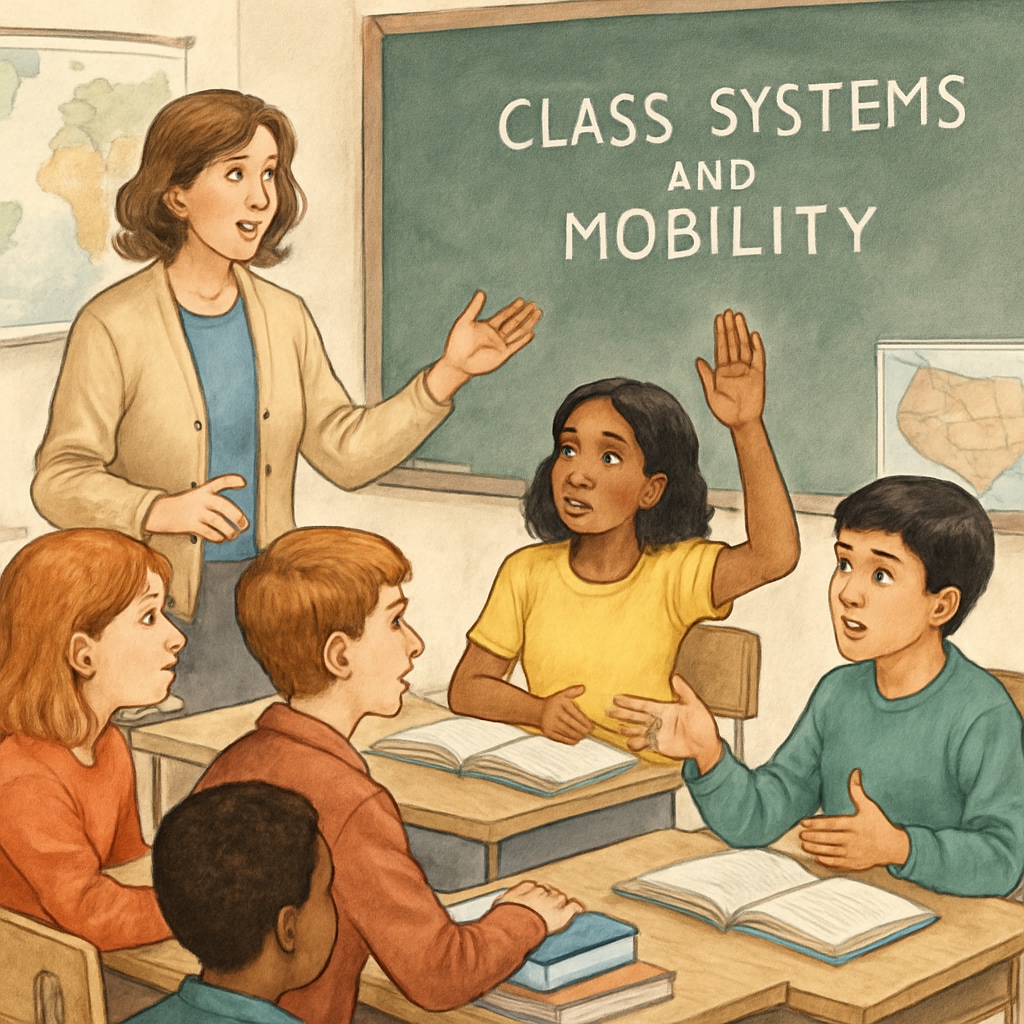The portrayal of “class stagnation” in K12 education has sparked intense debate among educators, policy makers, and researchers. By framing social mobility as a rigid, almost unattainable goal, such narratives risk limiting students’ understanding of the complexities of social systems and their own potential within them. This article critically examines the implications of this perspective in education, highlighting the need for balanced teaching that fosters both critical thinking and optimism in students.

Understanding the Narrative of Class Stagnation in Education
Class stagnation refers to the idea that social stratification is rigid and impermeable, making upward mobility nearly impossible for individuals born into lower socioeconomic statuses. This narrative, while rooted in certain sociological observations, is often oversimplified in K12 education. For example, educators may inadvertently present social systems as static, emphasizing barriers over opportunities. While this approach might aim to raise awareness of inequality, it can lead students to feel disempowered or resigned to their circumstances.
However, the reality of social mobility is far more nuanced. According to studies from Britannica, factors such as education, policy changes, and economic trends can significantly influence mobility rates. By acknowledging both challenges and possibilities, educators can provide a more comprehensive view of the social landscape.
Impact of Simplified Narratives on Student Perspectives
When social mobility is taught as a rigid concept, it can have unintended consequences on students’ attitudes and aspirations. For example, a classroom discussion focusing solely on systemic barriers might lead students from disadvantaged backgrounds to internalize a sense of hopelessness. Conversely, students from privileged backgrounds might perceive their success as purely merit-based, overlooking systemic advantages.
Balanced education is essential to counteract these effects. By incorporating diverse perspectives, educators can help students develop critical thinking skills to analyze social systems, rather than passively accept them. For example, case studies of individuals who overcame adversity or policy initiatives aimed at reducing inequality can inspire students to see possibilities for change.

Fostering Critical Thinking Through Balanced Teaching
To cultivate a more informed understanding of social mobility, educators must adopt a balanced approach to teaching class systems. This includes:
- Introducing historical and contemporary examples of social mobility to illustrate its complexities.
- Encouraging students to critically evaluate the role of education, government policies, and individual effort in shaping mobility outcomes.
- Creating interactive activities, such as debates or research projects, to engage students in exploring diverse perspectives.
- Highlighting the importance of resilience and agency, alongside systemic factors, in achieving personal success.
By promoting these strategies, education can empower students to think critically and act proactively within their social contexts.
Reframing Social Mobility Narratives for Future Generations
Ultimately, the way social mobility is taught in schools has profound implications for how students perceive their place in society. A more balanced narrative—one that acknowledges barriers while emphasizing opportunities—can inspire hope and drive. As a result, educators play a pivotal role in shaping the next generation’s understanding of social systems and their potential for change.
For further exploration, resources such as Education and Social Mobility on Wikipedia provide valuable insights into the interplay between education and societal change. By leveraging such materials, educators can enrich classroom discussions and equip students with the tools to navigate and challenge societal norms.
Readability guidance: This article uses short paragraphs, lists, and transitions to enhance readability. It avoids excessive jargon and maintains a conversational yet professional tone suitable for educators and students alike.


